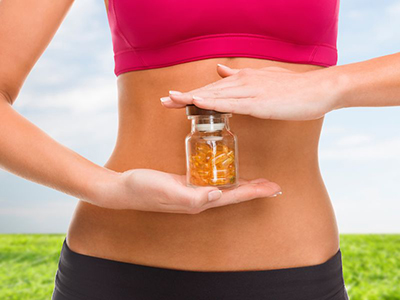 Probiotics (EU) may be the fastest growing category in the dietary supplement industry. The speed at which people feel their effects (14 days or sooner for some) plays a role in this growth. Or perhaps interest in the microbiome stimulated some additional interest in probiotics. And then there’s the reality that gut problems are no fun. That’s enough to stimulate interest for most consumers. With so much interest and growth, you may be interested in formulating your own probiotic product. Below we try to unpack some of the difficulties with making a probiotic so you can be successful.
Probiotics (EU) may be the fastest growing category in the dietary supplement industry. The speed at which people feel their effects (14 days or sooner for some) plays a role in this growth. Or perhaps interest in the microbiome stimulated some additional interest in probiotics. And then there’s the reality that gut problems are no fun. That’s enough to stimulate interest for most consumers. With so much interest and growth, you may be interested in formulating your own probiotic product. Below we try to unpack some of the difficulties with making a probiotic so you can be successful.
Before getting to the dosage forms, there are 4 other areas that need to be clarified.
- Consider ingredient selection. If you are choosing lactic acid bacteria (LAB’s) (EU) or vegetative cells of spore-forming bacteria, it will be essential to protect the formulation and the processes much more compared to a spore (EU) ingredient. Please note, many ingredients you believe are spores may actually be the same bacteria in a vegetative cell, which will change it’s stability compared to the same bacteria is in a spore state.
- Target potency considerations provide clarification on which dosage form below will be most effective.
- The process and facility controls where the probiotic is manufactured must be closely evaluated before launching your finished product.
- Packaging must be HDPE or glass, unless some of the technologies listed below are used.
Dosage Forms (in order from most to least complex)
Tablets
Tablets are often the most cost effective supplement dosage form, but this is not necessarily true for probiotics. This form supports some fantastic products, especially chewable products. However, there are a few major considerations:
- Use a spore bacterium or blend like (Deerland Enzymes DE111) rather than products that have vegetative cells or LAB’s if at all possible. If you must use vegetative cells or LAB’s then the next considerations are essential.
- For non-spore probiotics you must consider flow agents, diluents and equipment tabletting speed.
- Water activity (aW) levels for each of the other ingredients touching your probiotic must be kept below 0.20 aW. Higher water activity supports microorganism growth, but growth of probiotics in their final dosage form means they are unstable and won’t achieve shelf-life targets.
- Finally, tablet press speed must be as slow as possible in order to limit heat into the tablet. From some work done on tablets using non-spore LAB’s, an average of up to 15x has been necessary to achieve a 2 year shelf-life.
Powders
Powder probiotic finished goods provide some significant opportunities as they are likely the least complicated of all of the dosage options from a manufacturing perspective. Since ingredient suppliers provide probiotics in a dry, powder form, the main focus for this dosage form will be in aW (water activity) of other ingredients, the processing facility having low humidity, and packaging components. The best material for packaging this product is a desiccated wall bottle, sachet or stick pack. This packaging will pull moisture from the product, supporting longer-term stability compared to using a desiccant component tossed into the bottle.
Capsules
Capsules, by far, represent the most used dosage form for probiotics because they allow for 2 major differentiators combined into one form: higher potency and longer stability. Powders can have higher potencies, but stability isn’t quite as good as encapsulation. If you want a 100 billion cfu per dose product or a 1 billion cfu per dose product, capsules allow you to manage your shelf-life very effectively, provided you cover the 4 major aspects of the formula:
- Use the most stable raw material you can find.
- Use a facility that handles and manufactures under less than 30% humidity (along with cold storage).
- Use low water activity excipients and packaging recommended above.
- Use HDPE or glass packaging.
It is essential to choose a low moisture capsule, such as a veggie capsule. Beef gelatin (EU) contains significant amounts of moisture, which will decrease your LAB product’s shelf-life.
The key take-a-ways for making a great probiotic are:
- Stable raw materials, spores first or stable LAB
- Less than 30% relative humidity facility
- Other ingredients with low water activity, below 0.20aW
- Optimal packaging with low MVTR or desiccated wall.
Probiotics are here to stay, and the industry has an opportunity to continuously improve on how they deliver these valuable ingredients to the marketplace. The above ideas will help provide some clarity on how to deliver maximum value in products that require high value ingredients!
Search probiotics in Prospector now… (EU)
About the Author:
 Francisco Rodriguez is the founder of Supplement Innovator, a consulting service for small to mid-size supplement companies. He has worked in the industry for over a decade as a formulator and account executive for companies such as Garden of Life and Danisco. His experience gives him specialized expertise in probiotics, protein, brain health and weight management. Email Francisco for information on how Supplement Innovator can help turn your nutrition ideas into reality.
Francisco Rodriguez is the founder of Supplement Innovator, a consulting service for small to mid-size supplement companies. He has worked in the industry for over a decade as a formulator and account executive for companies such as Garden of Life and Danisco. His experience gives him specialized expertise in probiotics, protein, brain health and weight management. Email Francisco for information on how Supplement Innovator can help turn your nutrition ideas into reality.
The views, opinions and technical analyses presented here are those of the author or advertiser, and are not necessarily those of ULProspector.com or UL Solutions. The appearance of this content in the UL Prospector Knowledge Center does not constitute an endorsement by UL Solutions or its affiliates.
All content is subject to copyright and may not be reproduced without prior authorization from UL Solutions or the content author.
The content has been made available for informational and educational purposes only. While the editors of this site may verify the accuracy of its content from time to time, we assume no responsibility for errors made by the author, editorial staff or any other contributor.
UL Solutions does not make any representations or warranties with respect to the accuracy, applicability, fitness or completeness of the content. UL Solutions does not warrant the performance, effectiveness or applicability of sites listed or linked to in any content.



For me a much needed read. The number of customer requests coming in is significantly on the rise using multiple strains has created many unique challenges for me as a formulator, because the customer doesn’t want to hear what’s involved and the expected overages and stability issues for a quality product.
Dear Mr Francisco Rodriguez,
Thanks for sharing such informative probiotics segment in different dosage form.;
I would like to know the process of the probiotics tablets coating methods and material used in and shelf life ,
Very informative article. Thank you so much! This is very helpful for those pharmacists like me.
I agree! But Drugs are rarely administered as pure chemical substances alone and are almost always given as formulated preparations or medicines. These can vary from relatively simple solutions to complex drug delivery systems through the use of appropriate additives or excipients in the formulations.
The probiotic dosage form according to claim 9, wherein the plant-based cellulose of the two piece capsule and the plant-based cellulose present within the seal are independently selected from the group consisting of alkyl-substituted cellulose ethers, hydroxyalkyl-substituted cellulose ethers, alkylcelluloses, hydroxyalkylcelluloses, hydroxyalkylalkylcelluloses, carboxyalkylcelluloses, carboxyalkyl-alkylcelluloses, and mixtures thereof.